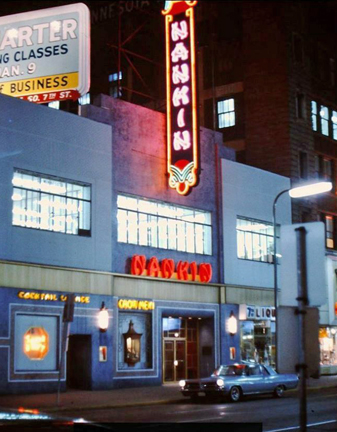Nankin
Minneapolis
The Nankin Cafe was a destination Chinese restaurant was located in three different places in downtown Minneapolis.
LOCATION 1: 15 SOUTH 7th STREET: 1919 – 1958
The Nankin first opened on October 23, 1919, at 15-17 South Seventh Street. The proprietor was Walter C. James.
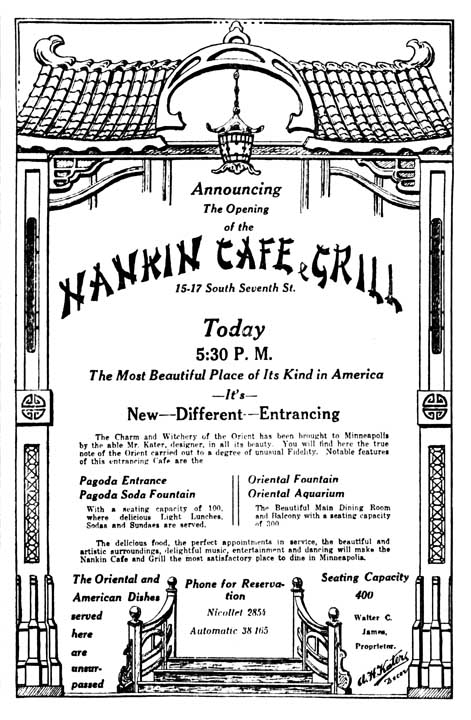
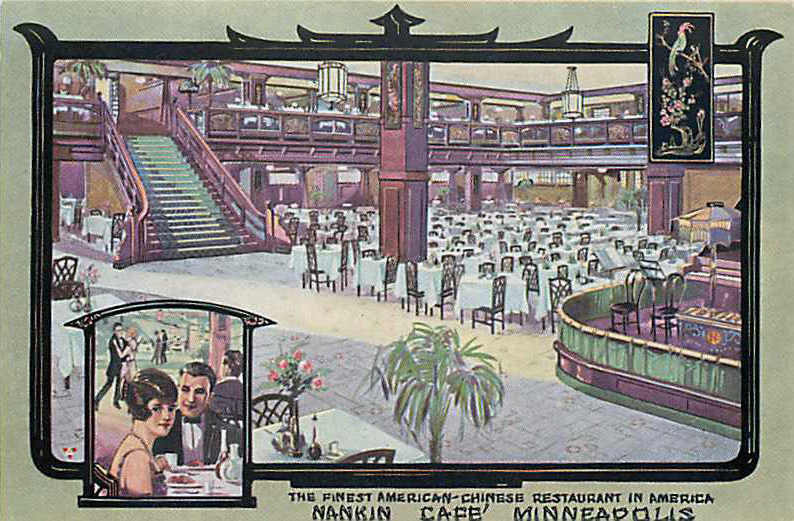
The Nankin Trio – the White Brothers and Stendal – performed over the radio on WBAD in 1922, along with Dick Long and his Original Jazz Band. Long led the house orchestra continued to broadcast over the radio into the 1940s.
There was a hall on the floor above where the Wolverine Club would hold dances.
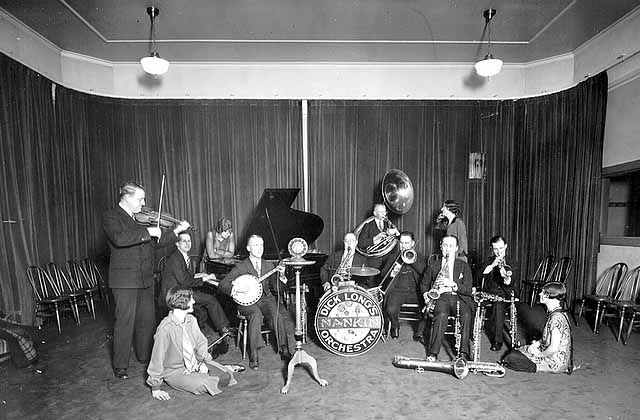
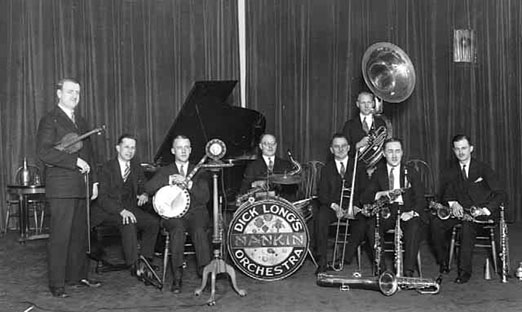
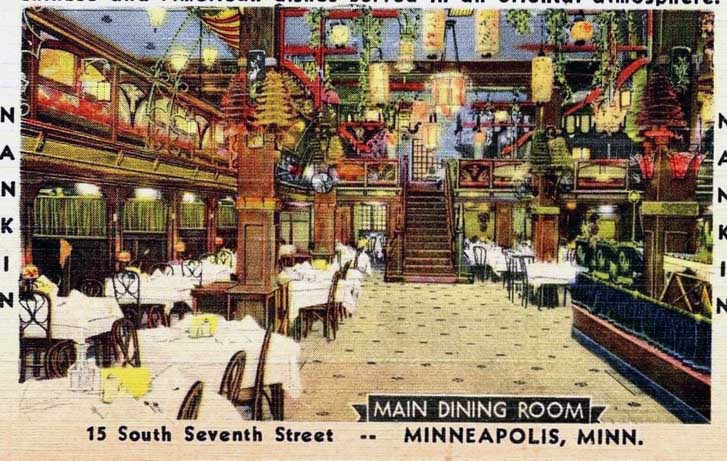
In 1949 James sold the Minneapolis Nankin to the Golden and Chalfen families, which also had interests in Holiday on Ice and the Minneapolis Lakers basketball team.
In late 1958 the Nankin moved across the street; the original location was razed for what was originally called the Dayton-Radisson parking ramp. The photo below shows what it looked like just before demolition by Rose Brothers Lumber Co.
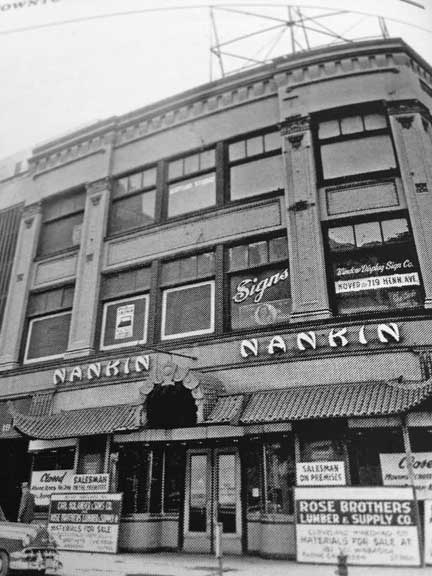
ST. PAUL
The program below from the Metropolitan Opera House is dated January 13, 1924, and indicates that there was another Nankin, under the same management, located at the corner of 7th and Wabasha in St. Paul (420 Wabasha).
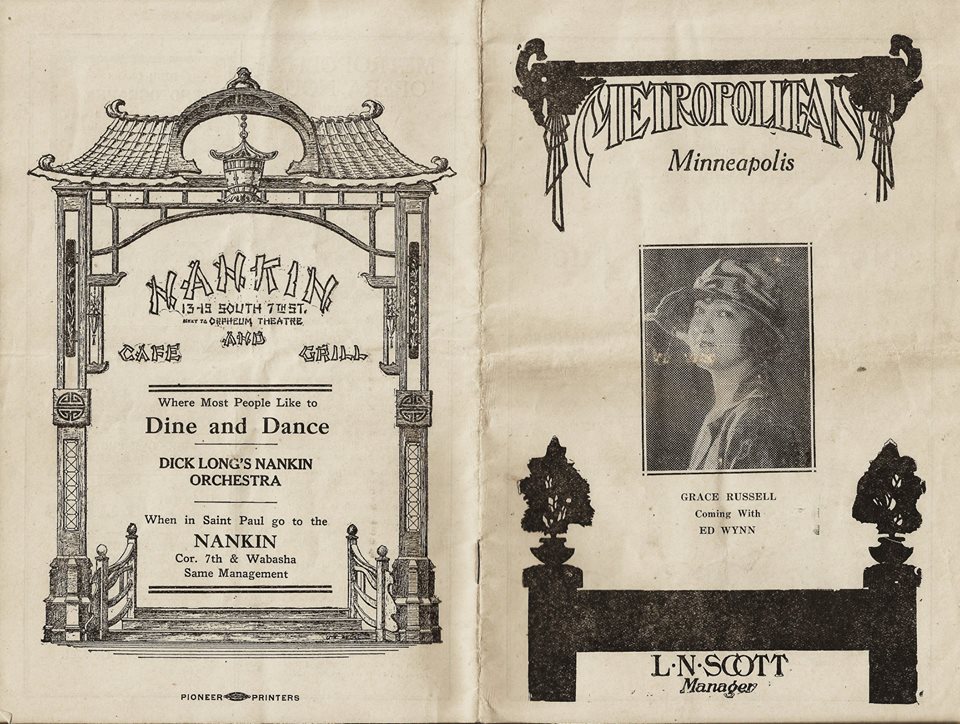
The restaurant is listed in the 1914 St. Paul directory at 420 Wabasha.
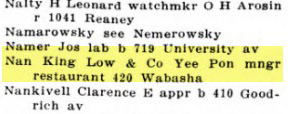
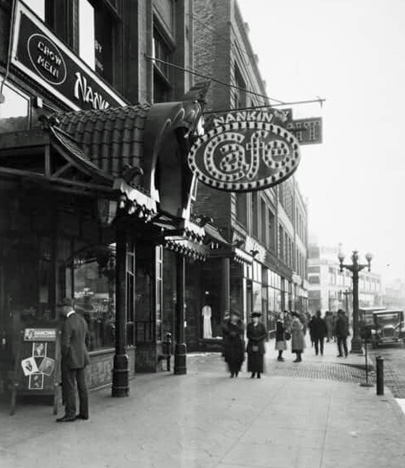
CHICAGO
James opened another Nankin in downtown Chicago in 1933. It was managed by Walter James’ sister and brother-in-law, Lola and Joe James. That restaurant moved to Skokie in 1948.
MINNEAPOLIS LOCATION 2: 20 SOUTH 7th STREET: 1958 – 1980
The Nankin moved across the street to 20 So. 7th Street in late 1958. In 1931 this building had been Miller’s Cafeteria.
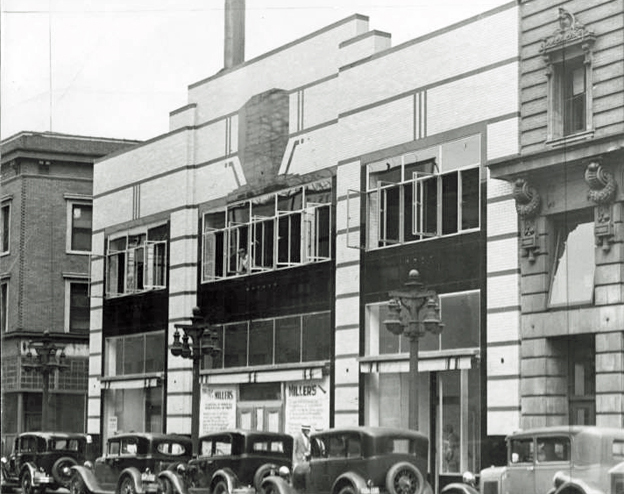
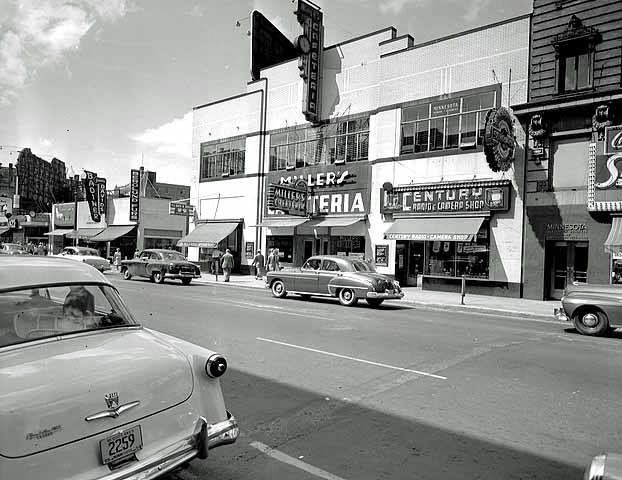
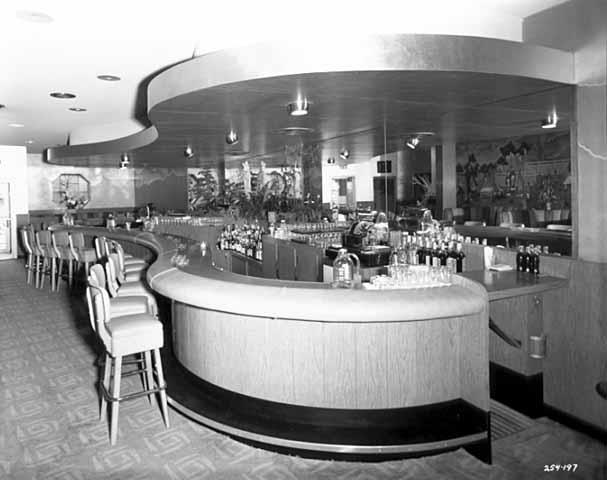
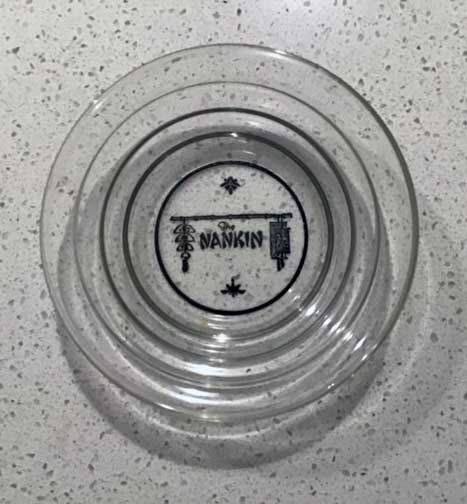
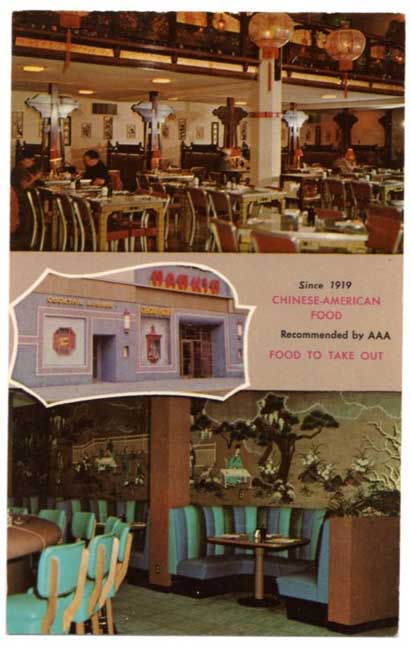
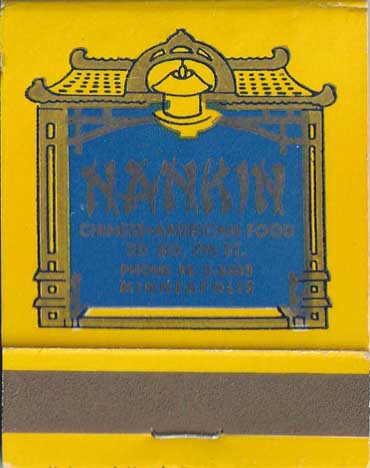
In August 1981 Minneapolis Star columnist Karin Winegar recorded her observations of the restaurant, just before it moved to its third and final location.
Take the Nankin’s food. It’s copious, it’s fast, it’s hot. But it is not gourmet by any definition. Numbers one through seven [items on the lengthy menu, probably variations on the kitchen’s famous chow mein] seem comprised of equal parts brown sauce, celery (Nankin customers consume 20 crates a day) and crunchy noodles (fried on site). The eggs foo yung are the size and texture of junior Frisbees and the sauces arrive in medical-looking paper cups. Enough “wanderer’s punch,” however, and no one notices.
The cheerful, hardcore and silent bus help are part of a crew of some 200 workers, said to be the largest restaurant staff in town. Nankin waitresses and waiters don’t serve as much as deal the plates like cards. They zoom in and out the swinging doors, zip up and down the carpeted stairs. The public never sees the 30 Nankin chefs, 20 of whom can only speak Chinese.
Together, they crack out some 3,000 meals daily. That’s almost a million a year. And in a town which seems to slam its shutters around 9 p.m., the Nankin could be relied upon to serve food until late at night.
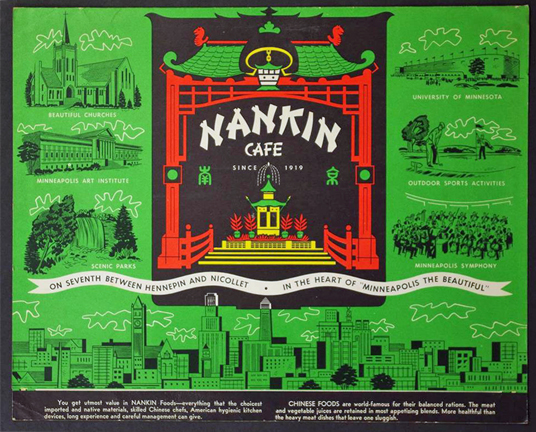
In 1980 the second location at 20 So. 7th Street was razed, along with the entire Block E, to make way for City Center, after its owners agreed to a settlement allowing it to relocate to City Center in 1981 upon completion of the complex.
MINNEAPOLIS LOCATION 3: 7th and HENNEPIN (CITY CENTER): 1981 – 1999
In 1981 it relocated once again to City Center. US Restaurants, the company behind the Green Mill chain, were co-owners briefly in the late 1980s. The Wu family, founders of the Szechuan Star Restaurant in Edina, owned the Nankin from 1989 to 1999.
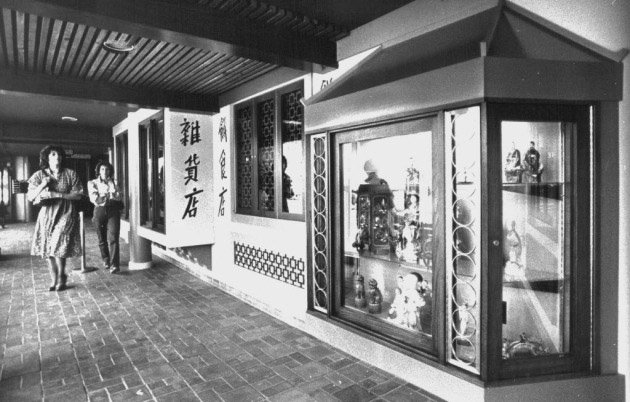
Above and below: The Nankin at City Center, 1981. Photos from the StarTribune, June 10, 2017.
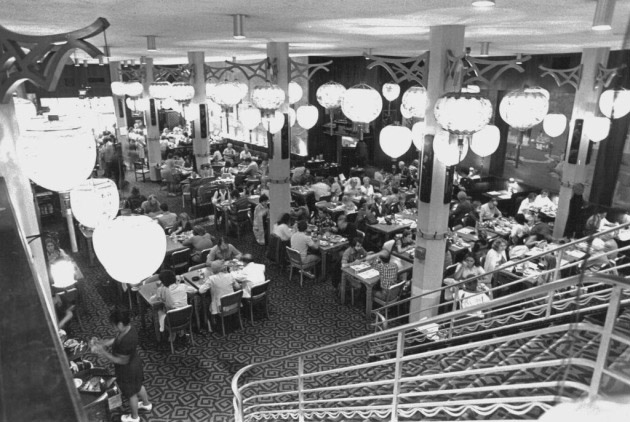
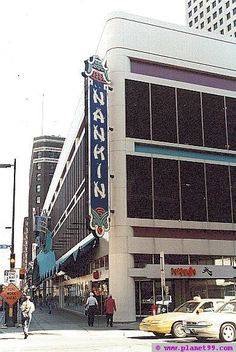
END OF THE NANKIN
The Nankin closed on February 24, 1999, when the owners and the landlord, Brookfield Properties (owner of City Center) mutually agreed not to renew the lease at the end of January.
Rick Nelson’s article in the Strib explained the demise of the Nankin:
The Nankin weathered some hard times in the past decade. Its traditional Chinese-American menu fell out of favor. A strike in late 1988 led to a five-month shutdown. A drug raid by Minneapolis police in early April 1997, in which 19 customers were arrested, didn’t help the restaurant’s fading reputation. A few weeks later, the Wu family filed for Chapter 11 bankruptcy protection, claiming a rent dispute.
THE NANKIN’S SIGN
On March 1, 1999, Barbara Flanagan made a pitch for saving the Nankin’s sign, which was 30 feet tall and contained more than 700 feet of neon. She called it 70 years old, indicating that it had been placed on the original site in 1929. In 1981 it had been put into storage when the owners of City Center banned it from the facade, a decision that was later reversed. After restoration, the sign was installed outside of its final location in November 1984. What became of it after 1999?
